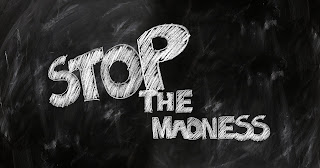If you're a student of literature, you might have come across the term "Theatre of the Absurd." British scholar Martin Esslin first used the phrase “theater of the absurd” in a 1961 critical study of several contemporary dramatists, including Irish-born playwright Samuel Beckett and French playwrights Eugène Ionesco, Jean Genet, and Arthur Adamov. So, there's this type of theatre called absurdist theatre that became popular in the mid-20th century. It started in France during the mid-1940s through the 1950s. Basically, the plays in this genre challenged the usual conventions of traditional theatre. They often had weird and illogical situations, unconventional dialogue, and not much of a plot to show how absurd human existence can be.
Historical and Social Context:
Absurd theatre roots back to late 19th century in French, Germany and Italy. There were several factors, intellectual, philosophical and political that hints at the fundamentally meaningless situation of humans in a confusing, hostile, and indifferent world. There were smoke and it caught fire at the World War. One of the significant factors that led to the ultimate flourish of Theatre of the Absurd was the political and social upheaval in Europe after World War II. Many artists and writers were disillusioned with the world they found themselves in and wanted to express their feelings of despair and alienation. The horrors of the Holocaust and the use of atomic bombs also left a profound impact on the artistic community, which was searching for new ways to reflect the absurdity of modern life.
Philosophical Underpinnings:
 |
| Waiting for Godot, a herald for the Theatre of the Absurd. Festival d'Avignon, dir. Otomar Krejča, 1978. Image : Wikipedia |
Literary Precedents:
The Theatre of the Absurd was not a completely new phenomenon. We can see signs of the theater of the absurd emerging in various writers and literary movements from the late 19th and early 20th centuries. This suggests that the origins of this theatrical style can be traced back to that time period. It had its roots in earlier literary movements, such as Dadaism and Surrealism, which sought to disrupt conventional thinking and challenge artistic traditions. Playwrights such as Alfred Jarry (Ubu roi 1896; translated 1951), Bertolt Brecht and Antonin Artaud (Le théâtre et son double 1938; The Theater and its Double, 1958) also paved the way for the Theatre of the Absurd with their use of surrealism and unconventional narrative techniques. Alfred Jarry was noted for his use of nonsense language and mocking of theatrical conventions. Brecht introduced alienation and Artaud dragged audience into the plot. added to that bizarre, disjointed, or illogical surrealism also made its structures.
Conclusion:
The Theatre of the Absurd emerged as a response to the political, social, and philosophical upheaval of the mid-20th century. It challenged traditional theatre and literary conventions and paved the way for new forms of artistic expression. As students, it is essential to understand the historical and cultural context that gave birth to this genre, as well as the philosophical and literary influences that shaped it. By exploring these factors, we can gain a deeper appreciation for the Theatre of the Absurd and its enduring legacy.
Reference
1. De, A.,(2011, February 1). Theatre of the Absurd- A Critical Survey. Theatre of the Absurd- a Critical Survey. https://ardhendude.blogspot.com/2011/02/write-short-note-on-theatre-of-absurd.html
2. Theatre of the Absurd | Definition, Characteristics, Examples, & Facts. (n.d.). Encyclopedia Britannica. https://www.britannica.com/art/Theatre-of-the-Absurd
3. Theatre of the Absurd - Wikipedia. (n.d.). Theatre of the Absurd - Wikipedia. https://en.wikipedia.org/wiki/Theatre_of_the_Absurd


Comments
Post a Comment
Drop any query, suggestion or comment here.